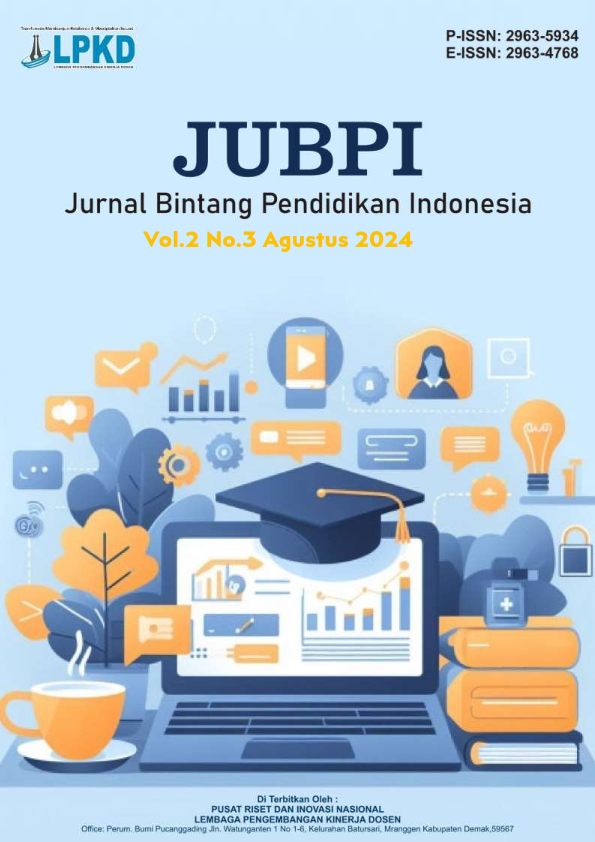Penggunaan Media Vidio Dalam Proses Pembelajaran Di Sekolah Dasar
DOI:
https://doi.org/10.55606/jubpi.v2i3.3095Keywords:
Video Media, Learning, Elementary School, Learning Effectiveness.Abstract
This article discusses the influence of the use of video media on learning outcomes in elementary schools. Video media is increasingly being used as a tool in the learning process to increase student participation and clarify lesson content. The research method used is quantitative with an experimental approach. The use of video media has a positive impact which is significant for students' understanding of concepts and retention of information. Students who learn with this media have a much greater level of learning success than students who learn with traditional methods. Apart from that, video media also increases students' motivation and interest in learning. These results show that Incorporating video and animation media into the learning process can be an effective strategy for improving the quality of education in elementary schools.
References
Kurniawan, T. D. (2016). Pengaruh penggunaan media pengetahuan sosial siswa kelas V SD se-Kecamatan Gedang Sari Gunung Kidul. Trihayu: Jurnal Pendidikan Ke-SD-An, 3(1), 21-26.
Nurdin, N. (2022). Pengaruh penggunaan video pembelajaran terhadap minat belajar siswa pada materi mendongeng di masa pandemi Covid 19. Murhum: Jurnal Pendidikan Anak Usia Dini, 3(1), 43-52. https://doi.org/10.37985/murhum.v3i1.75
Pamungkas, W. A. D., & Koeswanti, H. D. (2022). Penggunaan media pembelajaran video terhadap hasil belajar siswa sekolah dasar. Jurnal Ilmiah Pendidikan Profesi Guru, 4(3), 346-354. https://doi.org/10.23887/jippg.v4i3.41223
Sihombing, C. (2022). Pengaruh penggunaan media video pembelajaran terhadap hasil belajar IPA siswa kelas V. Edu Cendikia: Jurnal Ilmiah Kependidikan, 2(02), 289-294. https://doi.org/10.47709/educendikia.v2i02.1644
Wisada, P. D., Sudarma, I. K., & Yuda, S. A. I. W. I. (2019). Pengembangan media video pembelajaran berorientasi pendidikan karakter. Journal of Education Technology, 3(3), 140. https://doi.org/10.23887/jet.v3i3.21735








